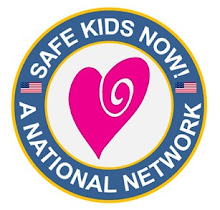1. 63% of all boys, age 11-20, who commit murder kill the man who was abusing their mother
2. 75% of boys who are present when their mothers are beaten were later identified as having demonstrable behavior problems
3. Children from homes characterized by domestic violence are five to seven times more likely to experience significant psychological problems relative to children in the general population.
4. Domestic violence exposed children are four times more likely to visit the school nurse.
5. More than half of school age children in domestic violence shelters show clinical levels of anxiety or post-traumatic stress disorder.
6. Researchers have linked exposure to chronic abuse and violence with lower IQ scores, poorer language skills, decrements in visual-motor integration skills and problems with attention and memory.
7. Cognitive problems associated with exposure to violence and abuse comprises one of the most direct threats to the developmental task of school adaptation and academic achievement.
8. Witnessing violence as a child is associated with adult reports of depression, trauma-related symptoms and low self-esteem among women and trauma-related symptoms among men
9. Children in homes where domestic violence occurs are physically abused or seriously neglected at a rate 1500% higher than the national average in the general population.
10. 3.3 million children witness domestic violence each year in the US.
YOU can bring neighbors together to help stop domestic violence, check out the "Adopt-A-Block" Guidebook on www.safekidsnow.com/adoptablock.html
Subscribe to:
Post Comments (Atom)





Fierce Love...Unplanned?
ReplyDeleteA few weeks before she passed away, my Great Aunt Mil contributed to one of our Benevolent recipients. She chose to help someone who has seven children living at home with her. Aunt Mil was glad to give and glad to help, but as she did so, she said (in her 95-year-old pithy way): “Seven kids. I don’t see how she’ll ever get ahead.”
When we hear or read about the allegorical welfare mom (or welfare queen, depending on your source), she often has a great number of children – a brood, if you will. She is, of course, hyperbole, as are her numerous children. This Mother’s Day weekend, however, I found myself thinking about this allegorical figure in a different light.
On Mother’s Day I got to sleep in, celebrate with my kids and all that. Later that day I sat down to write for today’s blog and my mind kept going back to a piece of research I read recently and some trends we’re seeing among the recipients on the Benevolent site.
We launched the Benevolent site only this past December, but as early as March, I started to see a thread of connection I hadn’t anticipated. It seemed to me that of the women who posted their needs to the Benevolent site, those who described having fled and survived domestic violence had more children than those who did not report a history of domestic violence.
Of course as we seek to help the mother who has escaped and overcome domestic violence to thrive, we do not and should not ask whether the number of children she has a connection to victimization. This started me wondering, though - was this a real trend, and if so, why? I started looking for research to help me understand what I thought I might be seeing.
I found some articles and papers that described the ways in which abusers undermine a woman’s control over her fertility choices. These included interference with contraception (making holes in condoms, discarding a woman’s contraceptive pills or devices), sexual assault, and more. (Black, 2011) But this article posed no quantitative analysis to indicate how prevalent this was.
Another article summed up the scholarly research on the connections between unintended pregnancy and domestic violence. This one told me more. I discovered that in one U.S. study, “almost 70% of women reporting physical violence had unwanted and/or mistimed pregnancies,” and women with unwanted pregnancies were 4.1 times more likely to have been physically abused “than women with intended pregnancies before adjusting for other variables.” (Gazmararian et al., 1995)
Again, not clear causality, but certainly an arresting correlation. The author of this article explained: “The association between intimate partner violence and unintended pregnancy implies an intergenerational cycle in which unintended childbearing in abusive households can lead to repeated cycles of violence and unintended pregnancy.” (Pallitto et al, 2005)
What is clear is that the more children a mother has, the harder it will be for her to protect them, provide for them, and promote their education, simply by virtue of numbers.
Aunt Mil had a point. If there is any causality – whether widespread or even sporadic – between intimate violence and unintended pregnancy, then I want to take this moment – this Mother’s Day moment – to express my immense respect for those women who fiercely love, protect, support, and nurture children whose existence they had not planned or intended.
As a mother who held complete control over when and how I would choose to try to conceive, I concede all maternal kudos today and award them all to those mothers who protected their children, brought them to safety, fought to rebuild and thrive, and fight on today as they raise children they pray will never repeat the violence of their mutual past.
- megan kashner, founder & ceo
Benevolent - www.benevolent.net